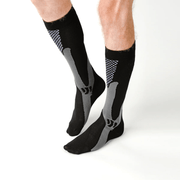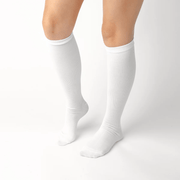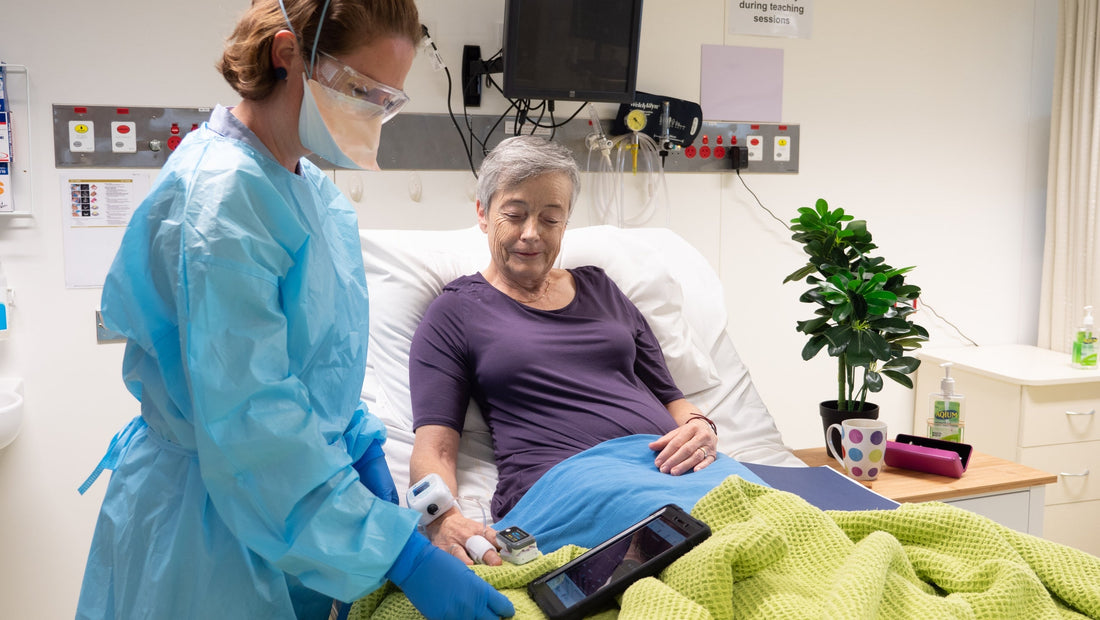Wearing compression socks is often recommended after certain types of surgery to promote better healing. They are usually used when you cannot move much after your operation to prevent deep vein thrombosis (DVT).
If your surgeon or healthcare worker does not recommend their use, it is best to ask their advice before deciding to wear them.
How long you wear compression socks for after surgery depends on your recovery. But you should wear them as much as possible during the day and in bed at night until your movement is back to normal.
Why wear compression socks after an operation?
Your health workers will assess whether you need to wear compression socks or not while in hospital. It depends on the risks of developing DVT. These risks include:
- Knee, leg, abdomen or hip surgery.
- Being under general anaesthetic for 90 minutes or more.
- When you are not very mobile after an operation such as needing bed rest, spend long periods of time sitting in a chair or cannot walk without help.
So what are the benefits of wearing compression socks?
Benefits of wearing compression socks
DVT manifests deep in the veins when a blood clot forms. They usually occur in your legs but can form in other parts of your body. When a blood clot breaks off, it can travel through your system and cause serious problems such as a pulmonary embolism in your lungs.
Surgery can increase the chance of blood clots forming when you cannot move around as normal. Signs of DVT developing incudes red or discoloured skin and pain in your leg. By wearing compression socks, you can reduce DVT from forming.
Encourages blood circulation
Often you need to restrict your movement after an operation so the stitches at the surgical site can heal. But lying around during the healing process is not good for your circulation. You need to move around to get your heart pumping to stimulate the flow of blood through your system. Wearing the right compression socks helps your circulation by applying gentle pressure to your legs while you need to rest after an operation.
Prevents spider and varicose veins forming
Developing spider and varicose veins is common after an operation, especially if you had surgery on your lower legs. These occur because the circulation slows down which cause the veins to expand as the blood pools in them.
Spider veins are a cosmetic problem that look like thin, dark lines close to the surface of you skin. Varicose veins, on the other hand, can be a more serious problem They are larger and darker than spider veins, and can bulge out from your skin They can be itchy and make your legs ache. Wearing compression socks reduces the risk of these forming by promoting better circulation.
Lowers the chance of swelling
Some swelling after an operation is common around the surgical site. By wearing compression socks, the specially woven material in them stops the skin from expanding. They do not allow fluid to settle in one place and forces it to continue circulating through your system.
Accelerates healing
Wearing compression socks after surgery can accelerate healing. Because they increase your circulation, the oxygen and nutrients needed can easily reach the wound site. Good circulation also helps you absorb any medication into your bloodstream to distribute it throughout your body.
Compression socks do not replace other care required after surgery. But the use of compression socks are a good part of your overall care plan. How long you need to wear them depends on the healing process.
 Active Compression
Active Compression
 Plain Compression Socks
Plain Compression Socks

